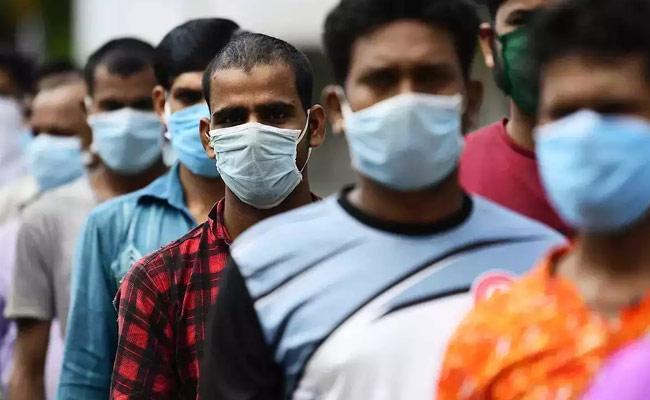
Researchers have developed a new N95 face mask that can not only reduce COVID-19 spread but also kill the SARS-CoV-2 virus upon contact with it.
The mask can potentially be worn longer, causing less plastic waste as it does not need to be replaced as frequently, the researchers said.
"We think the work is a first step toward longer-lasting, self-sterilising personal protective equipment, such as the N95 respirator, said Edmund Palermo, from Rensselaer Polytechnic Institute in the US.
"It may help reduce transmission of airborne pathogens in general," Palermo said.
In research recently published in the journal Applied ACS Materials and Interfaces, the team successfully grafted broad-spectrum antimicrobial polymers onto the polypropylene filters used in N95 face masks.
"The active filtration layers in N95 masks are very sensitive to chemical modification. It can make them perform worse in terms of filtration, so they essentially no longer perform like N95s. They are made out of polypropylene, which is difficult to chemically modify."
"Another challenge is that you don't want to disrupt the very fine network of fibres in these masks, which might make them more difficult to breathe through,? Zha added.
The team, including researchers from Massachusetts Institute of Technology (MIT) in the US, attached antimicrobial quaternary ammonium polymers to the fibre surfaces of nonwoven polypropylene fabrics using ultraviolet (UV)-initiated grafting.
"The process that we developed uses a really simple chemistry to create this non-leaching polymer coating that can kill viruses and bacteria by essentially breaking open their outer layer," said Zha.
"It's very straightforward and a potentially scalable method," Zha noted. The team used only UV light and acetone in their process, which are widely available, to make it easy to implement.
The process can be applied to already manufactured polypropylene filters, rather than necessitating the development of new ones, the researchers said.
The team did see a decrease in filtration efficiency when the process was applied directly to the filtration layer of N95 masks, but the solution is straightforward, they said.
The user could wear an unaltered N95 mask along with another polypropylene layer with the antimicrobial polymer on top, according to the researchers.
In the future, manufacturers could make a mask with the antimicrobial polymer incorporated into the top layer, they said.
"Hopefully, we are on the other side of the COVID pandemic. But this kind of technology will be increasingly important," said Zha.
"The threat of diseases caused by airborne microbes is not going away. It's about time that we improved the performance and sustainability of the materials that we use to protect ourselves," Zha added.













